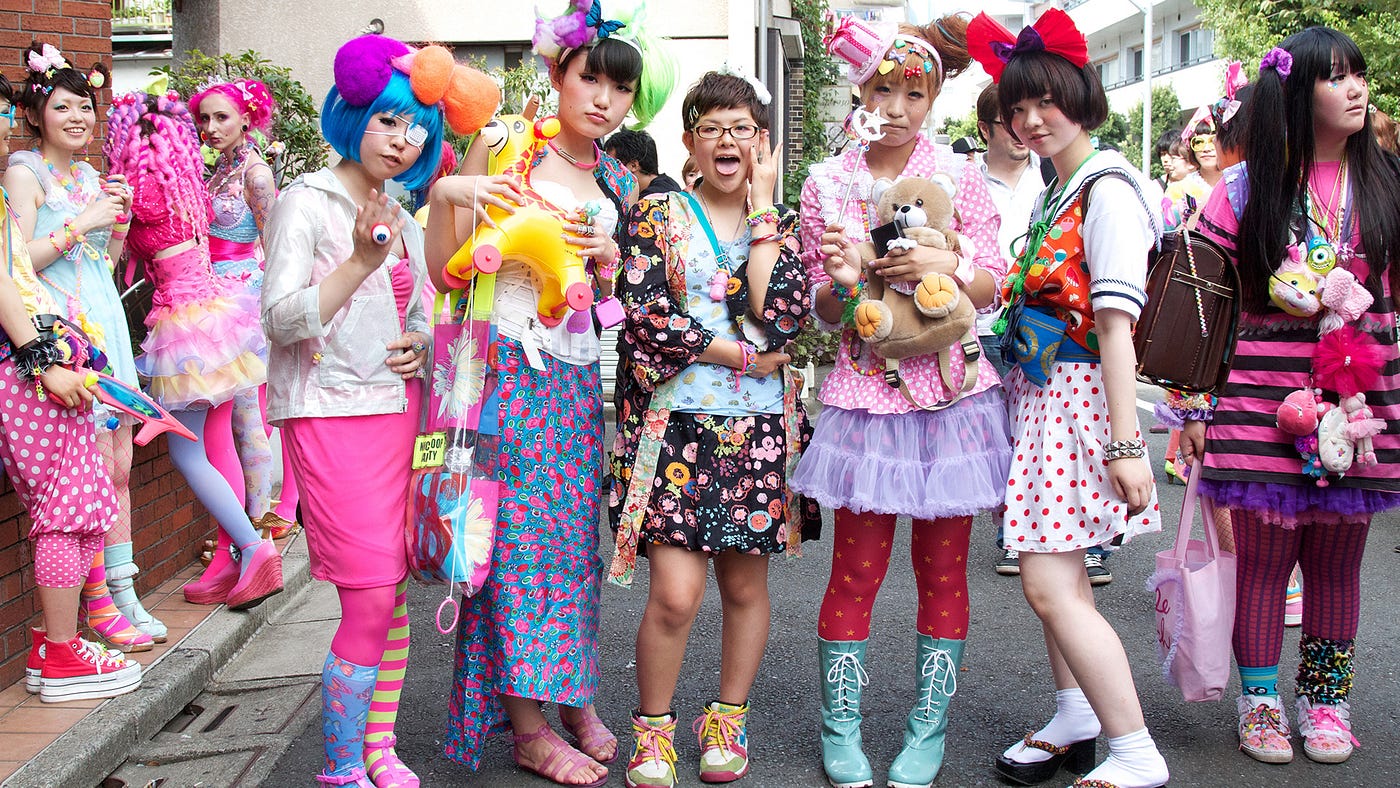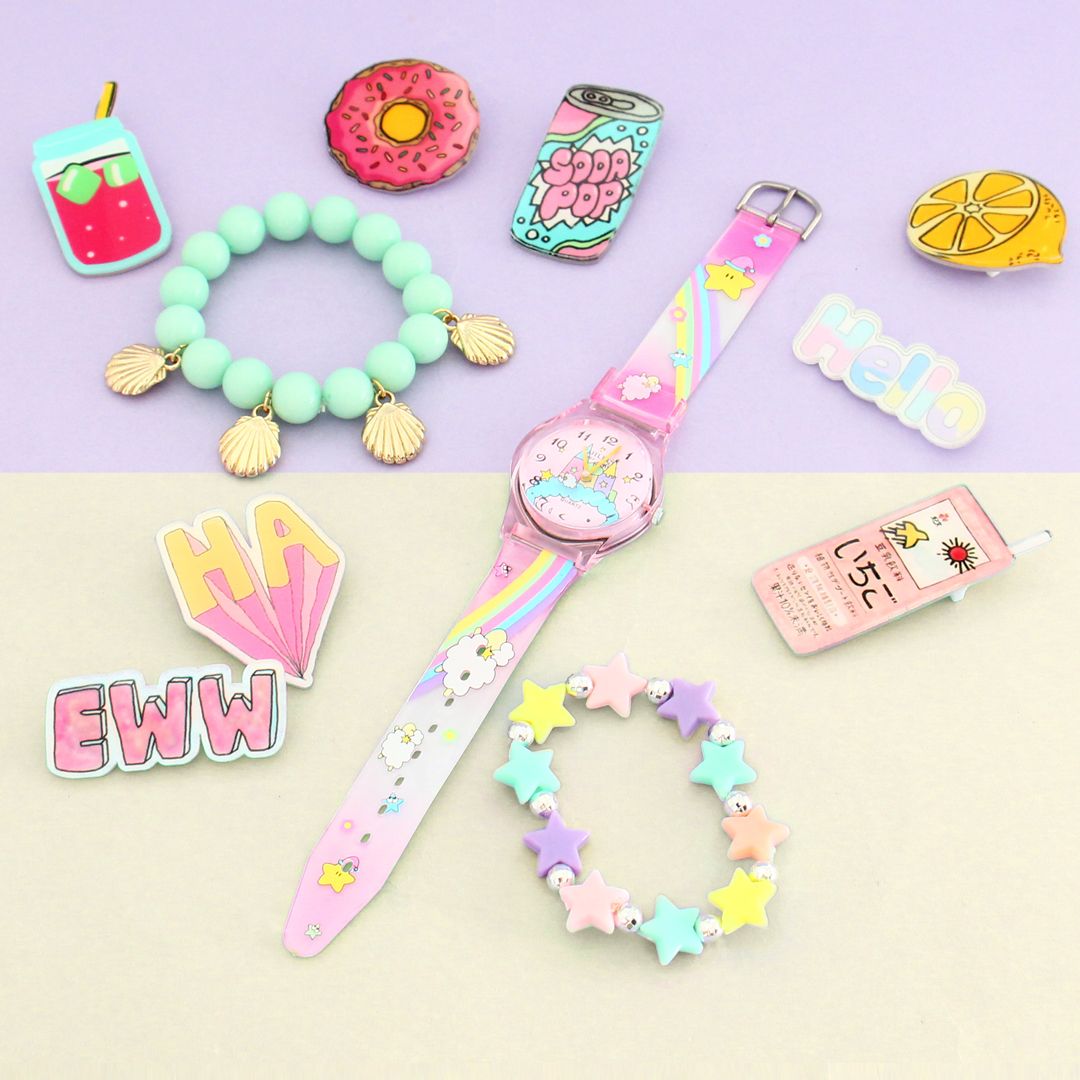HARAJUKU FASHION
The Birthplace of the Universal Concept “Kawaii”
Harajuku district in Tokyo is a leading area for Japanese young fashion. The area is like an exciting theme park for young Japanese girls in their teens and early twenties with abundance of shops and boutiques catering to mixed tastes. It continually generates new fashion into the world with the idea of “kawaii” as the keyword. Harajuku fashion is imaginative, so much so that it may seem eccentric at times to the older generation, but freely incorporating one’s own taste is exactly the spirit of Harajuku style. On the weekends, the streets bustle with girls of kawaii fashion looking for kawaii clothes.
 “Harajuku Kawaii” fashion with distinct pop color scheme
“Harajuku Kawaii” fashion with distinct pop color scheme
Kyary Pamyu Pamyu
Kyary Pamyu Pamyu is a widely successful singer with a strong following for her Harajuku style amongst young girls, who look up to her as a fashion icon. She has now gained popularity internationally with performances overseas, and continues to attract the young crowd with her distinctively original fashion sense.

(Left) Live Performance by Kyary Pamyu Pamyu.
(Right) CD album cover from “Nanda Collection” by Kyary Pamyu Pamyu
A sheer, light toned dress with lots of frills, combined with pastel-colored print socks with lace accents. This unique style would be something Kyary would wear. She often incorporates what is called “Fairy Kei” in her stage costume to convey the airy and fluffy feel just like how you’d imagine a fairy to be.
Free Spirited Fashion


(Left) Young man in Harajuku. Men also enjoy their own kawaii fashion.
(Right) Creating personal kawaii style by accessorizing with stickers on cheeks and a lot of headpieces
So, what kind of style is the Harajuku kawaii fashion?
There are many types of fashion in Harajuku including the medieval aristocrats-inspired Gothic style, the unique Japanese Lolita style with emphasis on girlish cuteness and coquettish beauty, the Gothic Lolita style that combines the two, and the ballerina-inspired style that mixes a tutu skirt with colorful tops.
But there are no sets of rules for the kawaii fashion. The focus of Harajuku style is not about looking kawaii from the male perspective, but rather about staying true to what you feel is kawaii and placing greater emphasis on what is kawaii from a girl’s perspective. Having one’s own sense of style and not holding back for other’s judgment, while utilizing bold colors to the fullest, is what enables the Harajuku girls to evolve their kawaii fashion.
Cute and Cool Accessory
Sometimes you encounter a shocking scene while taking a stroll in Harajuku. A girl passes by with a stuffed toy animal close to 30cm large hanging from her neck. It makes you pause with disbelief for a moment but it doesn’t stop there. Looking closer, she wears a giant—more like what you call an obstacle—ring that reads “doki doki” in Japanese which means “my heart leaps up”, colorful tights with full on print, and a thick platform shoes.
Another girl with a more fantastical sense of fashion might wear a large sparkly ribbon on her head, while dangling colorful necklaces in colors like pink, yellow and minty green. Either way, accessorizing with statement pieces is essential to Harajuku fashion.

Statement accessories that are essential for kawaii
Although Takeshita Street is recognized abroad as the fashion street in Harajuku, the cute two story shop situated a little ways from Takeshita Street, with pink exterior, is what started “Harajuku Kawaii” fashion. Kyary Pamyu Pamyu herself has long been a fan of this shop even before her debut.
Since 2009, they have been holding events to introduce the idea of kawaii around the world, and to this day they have toured around 20 cities. In October, “HARAJUKU KAWAii!!” will take place, which is a festival dedicated to Harajuku culture where the entire district becomes the festival site.

An event in London. Kawaii fashion catching people’s attention
The Japanese culture of kawaii will continue to evolve and attract the Japanese people and the rest of the world.

